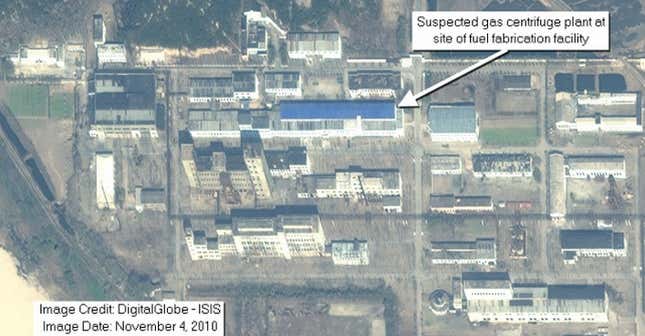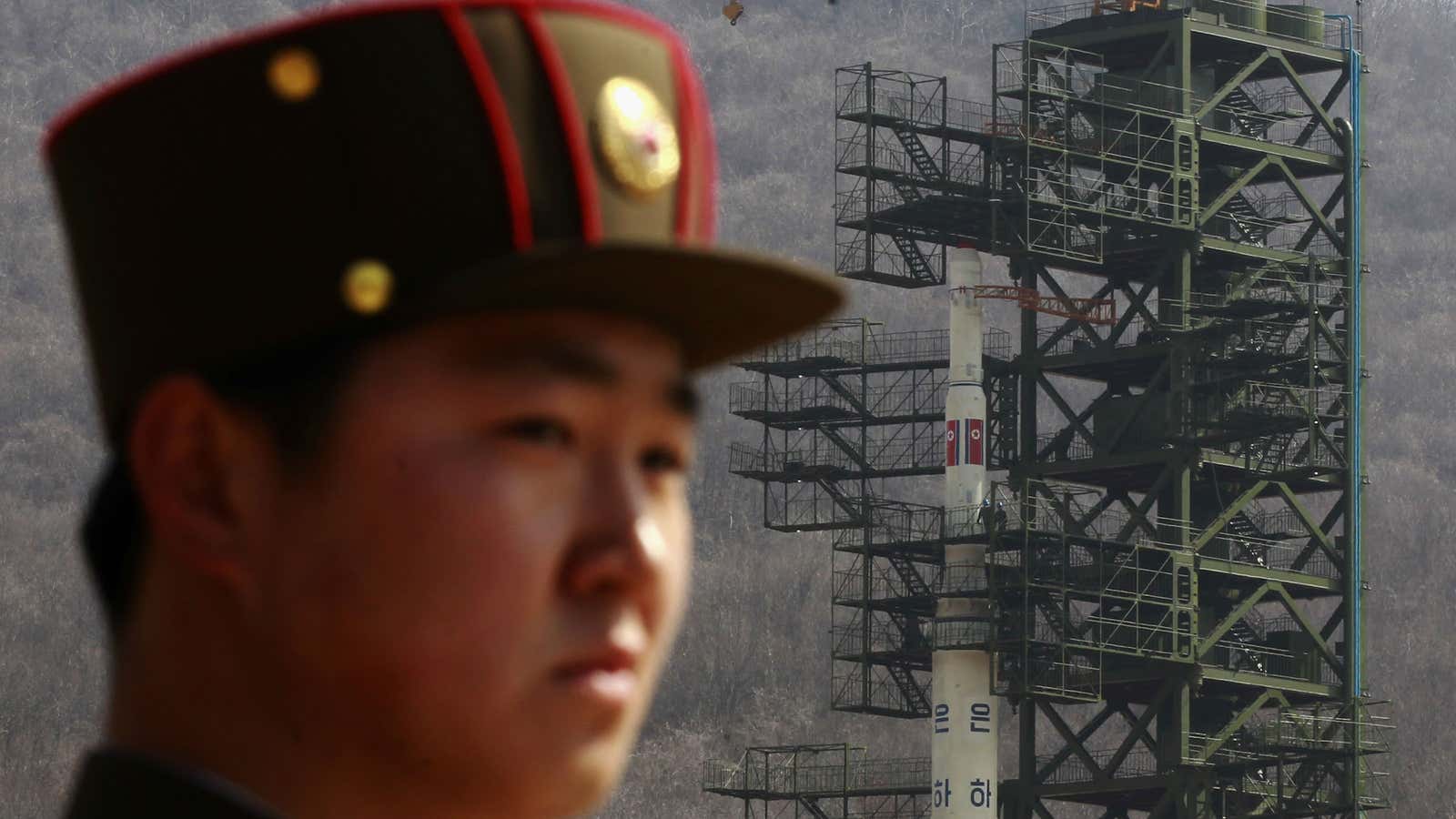On September 24, China released a 236-page list of goods it would no longer export to North Korea because of their possible use in developing nuclear or other weapons. It was a sign that even Pyongyang’s closest ally was turning up the pressure on the diplomatically isolated country.
But it’s quite possible that neither China’s ban nor international sanctions will have much of an impact at all on North Korea’s nuclear program. Research by two arms control experts suggests that North Korea doesn’t need to import critical components for centrifuges used in nuclear reactors; it’s been making them on its own since 2009, at the latest.
“If it is the case that North Korea is making the crucial components for centrifuges inside the country… [then] we can’t stop the expansion of the enrichment program. We can’t even reliably detect its expansion, and will have serious difficulties trying to find all the locations where enrichment plants might be,” said Joshua Pollack, an arms control expert, in remarks prepared for a speech at the Asan Institute in Seoul given earlier today.
“This raises serious questions about whether there is, or can be, a viable strategy for nuclear rollback,” he added. “If a denuclearilzation agreement is reached with North Korea… how can it be verified?”
The basis for Pollack’s dire warning comes from evidence that North Korea is manufacturing centrifuge-related technology that he and Scott Kemp, an expert on centrifuge technology at Massachusetts Institute of Technology, found in scientific articles by North Korean researchers, patents, news reports and propaganda.
These included photos of machinery and patents for equipment needed for the centrifuges, as well as accounts from North Korean researchers detailing a process that may have been for making a type of extremely hard steel used in the centrifuge process. Pollack says research on how to produce these technologies seems to have been largely completed by 2009 at the latest.
Pollack’s finding fits into a larger picture of North Korea accelerating its nuclear program, or at least working hard to look like it is. Earlier in September, satellite images showed the country may have restarted a reactor producing plutonium, which can also be used in nuclear bombs. The plant had been shut down as part of a 2007 disarmament deal.
Local production of these materials would also explain how North Korea was able to secretly build the vast centrifuge plant that shocked the US in 2010 when Korean officials showed it to a visiting American nuclear scientist. The US was taken by surprise partly because North Korea abruptly stopped importing centrifuge-related parts and materials after 2003, and there had been few indications that North Korea was importing specialty steel. Here’s a satellite image of the gas centrifuge plant at the Yongbyon nuclear site in North Korea in 2010, via the Institute for Science and International Security:

What does this mean for containing the North Korean nuclear threat? The international community should focus less on stopping uranium enrichment, says Pollack, and more on persuading North Korea to stop nuclear tests or rocket launches, or getting an agreement from Pyongyang not to export its technology. “These may be our best options while the North Korean regime still stands,” said Pollack. “We may be forced to live with a nuclear North Korea for a long time.”
